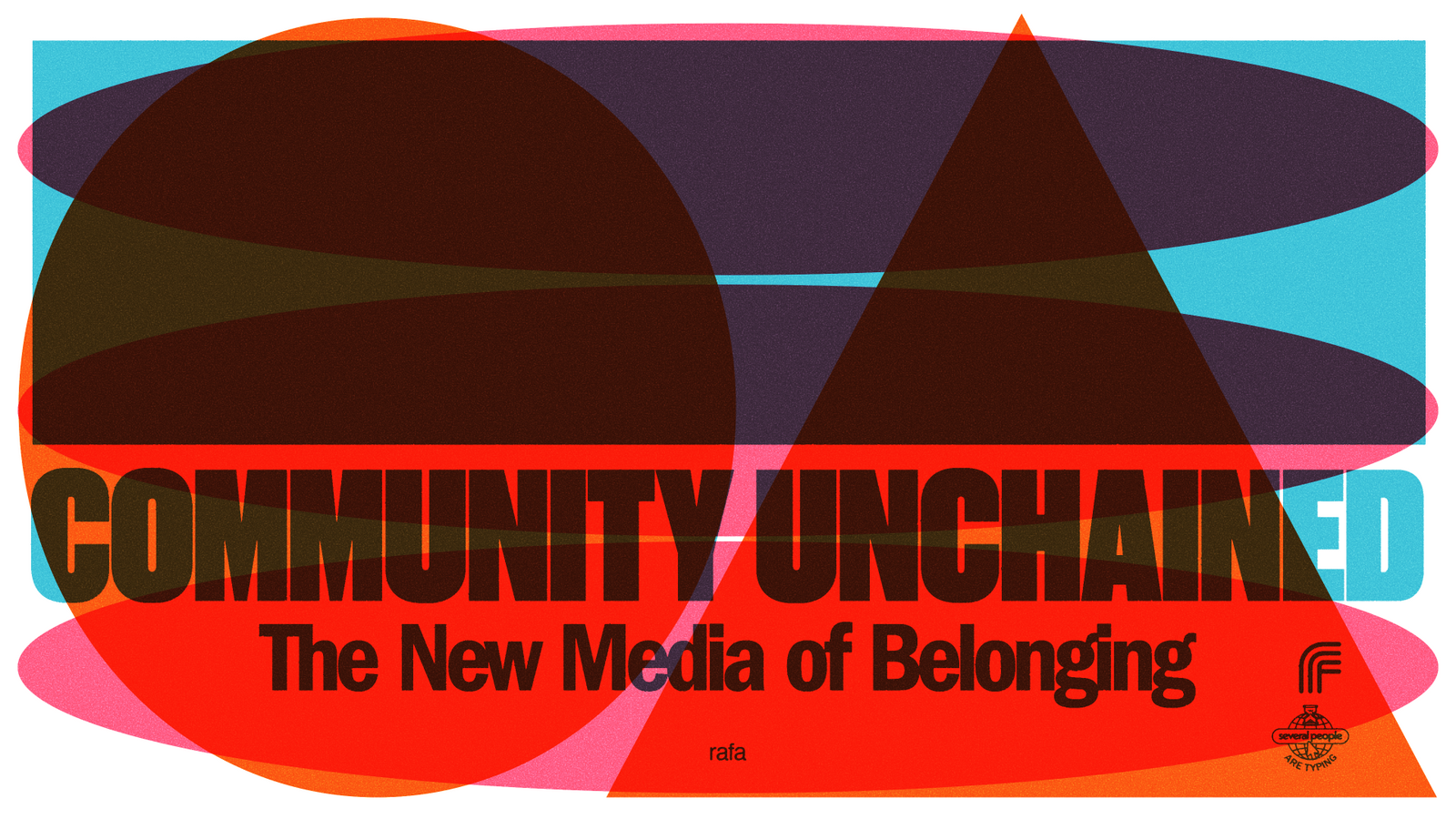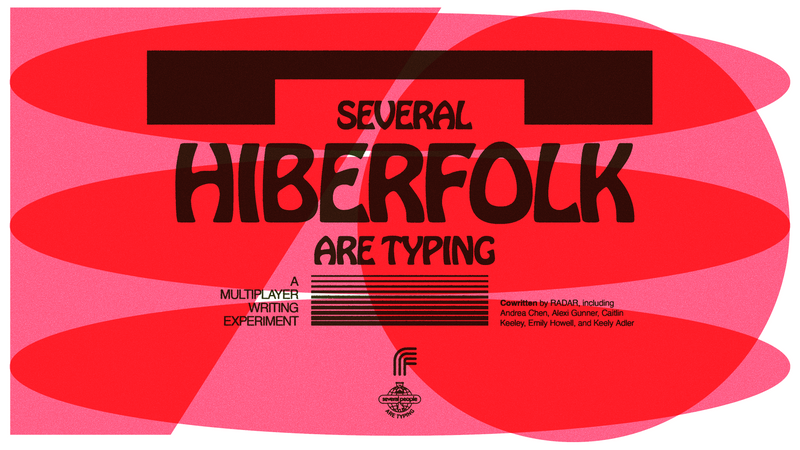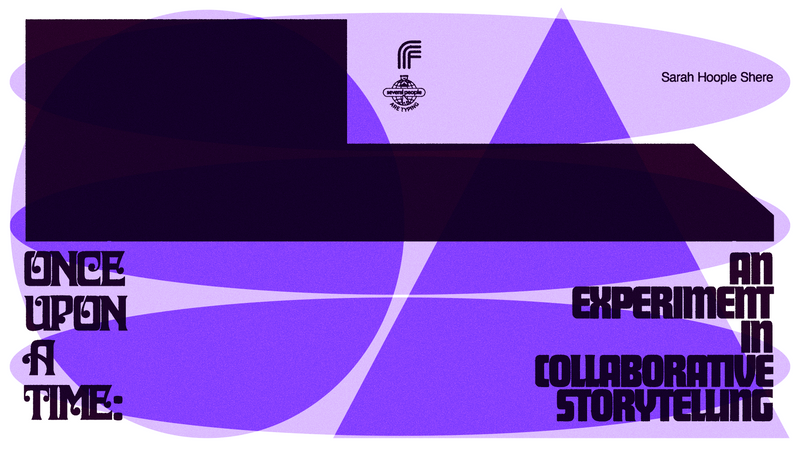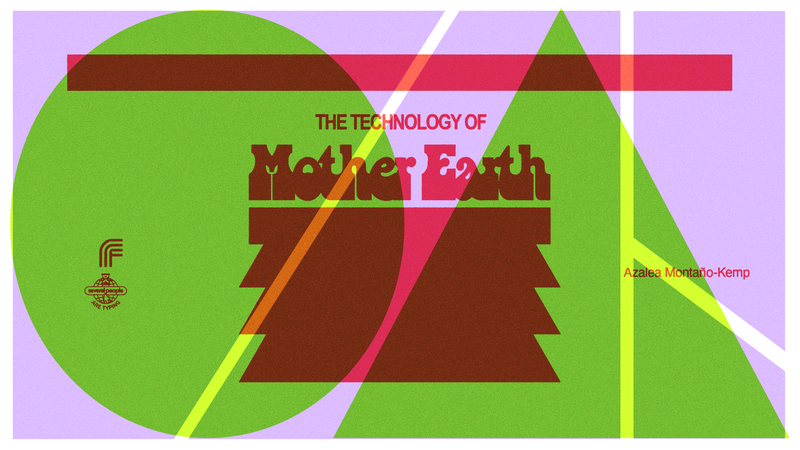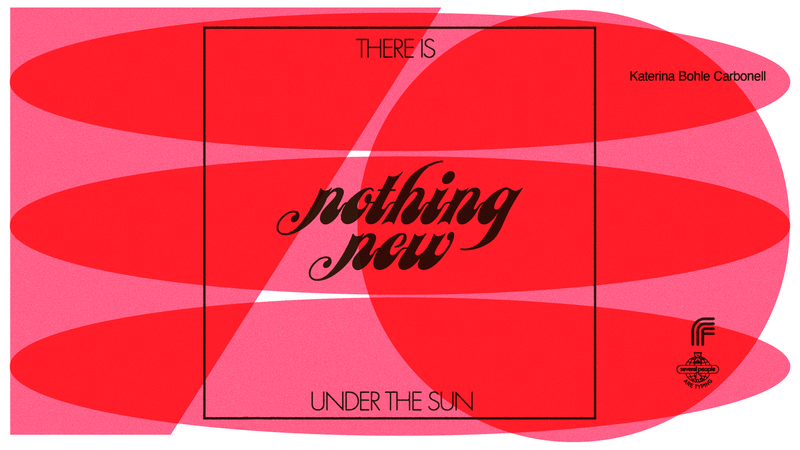This piece was written by rafa.
Media captures the social realities it digitizes. As we decompose our world into data, new media forms emerge and recompose the contour of the world they represent. With the advent of blockchain technology, the concepts of ownership, provenance, and social connections are now atomized and formalized, leading to the broad adoption and refinement of our latest form of media — Community Media.
“Whence did the wondrous mystic art arise,
Of painting SPEECH, and speaking to the eyes?
That by tracing magic lines are taught,
How to embody, and to colour THOUGHT?”
-Marshall McLuhan, The Medium is the Massage (1)
Today, our virtual worlds are no longer just video games; they are movements built on ownership and accountability. While onchain social networks like DAOs and NFT fandoms are just beginning to emerge, Community Media is set to become the next dominant and widely produced media form, powered by our thirst for belonging.
Digitized Relationships
In 2021, the ‘Hot DAO Summer’ led to the launch of new online entities leveraging blockchain technology. Groups of people pooled resources together and coordinated complex efforts — like building a decentralized city — through blockchain tokens. Yet the software infrastructure for these DAOs (Decentralized Autonomous Organizations) was not the only innovative construction. Blockchain technology, unlike its social media predecessors, could address the woes of the lonely masses of online suburbanites. Anyone could now join or build a community of belonging.
Millions willingly opened their wallets, spent their savings, and adopted niche esoteric vocab. ‘Minting’ became a daily activity. Newspaper cover stories and TV specials may have said this was a “gold-rush”(2) of pure speculation, but two years later it is clear to those obsessed with blockchain technology, the terminally onchain, that this wasn’t the only attraction. While investors chased money, digital asset collectors who had come for the money were finding a common purpose. Degens had paved the path for semi-retired technologists, sports fans, and nomads to find each other online, pool capital, and chase their dust-covered dreams.
Under the hood, DAOs and NFT collections had provided the missing ingredient to digitized relationships and community: ownership. Without ownership, relationships had been temporary rented connections, distorted by the lack of agency. Not any longer. Relationships, in their digital form, were now owned by each of us. We could finally weave networks of intimacy, loyalty, and trust outside of social media’s walled gardens.
Community, unshackled from platform lock, had suddenly become an accessible and collectible consumer experience; belonging was finally on sale as a reinvention of the 2017 Initial Coin Offering craze. But instead of unlimited profits, the 2021 ‘Initial Community Offering’ presented unlimited hope of connection. ‘WAGMI’ (we are going to make it!) and ‘gm’ (good morning!) became the believer’s daily mantras of connection.
Previous online communities had been protoforms of this new media. They nurtured connection, but their relationships lived within the confines of unknown designers and advertiser-focused algorithms. In some ways, communities from the 1990s and early 2000s were more like video games, where the environment was centrally designed and participants were avatars exploring a moderated world. Unfortunately, in step with the ecosystem demands, most communities acquiesced to moderation requirements and were trapped within the limits of the rented platforms. Groups were born on Facebook, only to be later removed and forgotten. We mourn many that vanished into the ether as product teams deleted their data due to convenience, accident, or state pressure. But their ghosts and descendants persist, regrouping onchain.
Today, we know that most of the DAOs and NFT fandoms born in 2021 didn’t achieve their publicly broadcasted goals. Dozens of founders sold their community a roadmap of belonging but then ran off with their tributes. ‘Rug’ became a known word, as those who participated in community experiences were abandoned and exploited by their prophets. And yet, the recipe for Community as consumer media was no longer occult knowledge; Pandora's box was unlocked. Blockchain social groups had accidentally done to Community Media what David Ogilvy, ‘The Father of Advertising’, had intentionally done to marketing: turned it into a productized good. Community, or your own platformless world, could now be built and monetized by anyone. All you needed was a combination of social connections, content ownership, and the right group of people. From this, using a common inventory and treasury, meaning would emerge.
From Action to Ownership
Five forms of media commonly discussed today are text, audio, photography, film, and video games. Each is anchored on the digitization and reimagination of a specific component of reality: text as the transformation of spoken word, audio of sound, photography of vision, and film of movement. Video games emerge at the concatenation of senses and capture the essence of action(3). And yet these forms of media are gardened by their artists, each a palace of experience crafted with intention, direction, and boundaries.
Community, as a new form, challenges our current notions of media. Like net art from the 1990s and early 2000s, “it is neither materialistic nor immaterial”(4). Even the concepts of production and artist seem to evade our grasp. Guardrails of co-creation dissolve into continuous apprenticeships, and agency emerges due to the members’ “legitimate peripheral participation”(5), as Lave and Wegner describe, in the act of ownership.
“The system becomes both the space and the material of work.”
Beryl Graham and Sarah Cook, Rethinking Curating (6)
The shape of Community Media is still emerging, but the initial pattern of its content form is already used. It is a digital content experience composed of relationships, inventories, and mind-space. These create a shared online space that is co-owned and mutually shaped by its participants. As film is composed of actors, their images, and accompanying audio, Community Media is composed of digitized commitments by a group of self-identified citizens or members.
There is a strong conceptual overlap between video games and Community Media: both have avatars acting on behalf of a participant in an interactive digital space. However, Community should be understood as a novel form of media, with its own theory and design space. It should not be confused for a game, and its participants should not be confused for gamers. While Community Media, like video games, is clearly an “active medium” where “[t]he world’s very materiality moves and restructures itself”(3), there are two key differences.
First, Community Media is controlled by its participants. Video games are not. In a video game, a central designer or team controls the box within which the avatar acts. In other words, the team of creators controls everything from the title to the physics of the game. In contrast, the rules of Community Media are mutually co-written and accessible to any eligible participant. It would be as if any gamer could not just submit a change request to a game while playing, but actually deploy it for others to adopt. Or, extending the metaphor further, if you could change the film you are watching for everyone else.
Second, there is no way to ‘win’ in Community Media — only to worldcraft together. All video games have specified paths of interactions with their software code, even when the game uses generative spaces. Combinations of these paths allow the player to go deeper into the game and claim a reward, sometimes public and other times secret. Achievements in the video game could include completing a narrative arc, gathering resources like gold or points, or achieving a specific end-state. In contrast, communities do not have a hardcoded objective function; they have an environment in which the participants mutually shape the objective functions of each other. In other words, the members are next-generation “world runners.”(7)
Both of these are a matter of participant ownership of the world and avatars they inhabit. While video games are media premised on action, Community is media extended to ownership.
Yet startups have built entire products of ‘gamification’ and ‘quests,’ misunderstanding the media they seek to scale. With a careful eye, we can discern how this is skeuomorphic. By implementing gamified models of community engagement, we are simply reverting to a media form dictated and moderated by its creator. Although useful as part of specific selected and time-bound experiences, gamification and quests need to be considered carefully. Both remove the fundamental component of community ownership, or legitimacy in participation, and provide incentives to exploit the game instead of co-creating a shared narrative.
In some ways, Community is the purest form of internet media.
As Wassim Alsindi pointed out: “The medium is now an assemblage of the message AND the messengers, enmeshed and entangled together.” The creators themselves remove the final boundary between object and participant; it is what happens when we provide agency at the intersection of broadcasting and a networked world.
“Media is no longer linear. Legacy outlets fade into noise, and communities have become screens through which all platforms are diffracted… To understand what this new era of community as media looks like, imagine the Web 1.0 webforum—multiple nodes arranged in a circle, each equally connected to the others. Now imagine the Web 2.0 attention-driven network: a sea of individual influencers connected unidirectionally to tiers of followers. In a composable community-as-media model, a protocol synthesizes both. Members of a shared network interact in a non-gamified, horizontal way—as in webforums—while also broadcasting across social media feeds, cross-pollinating their community’s thoughts and attracting new members.”
New Models, Holographic Media (8)
Attunement, Not Assimilation
Like previous forms of media, Community was initially handcrafted, is now being productized, and, shortly, will be mass-produced in autonomous factories. Our “content industrial complex”(9) is on its way to capturing yet another social reality and transforming it into a personalized, just-in-time offering. Business has extended beyond aesthetics and logistics, and into our mind collectives.
We can already see this pattern in the consumerization of Community summoning, also known as the initial launch. Ample products like Mirror, Juicebox, and NounsBuilder support crowdfunding and tokenized content — others will package events and lore as a full experience soon enough. Beyond these, niche social software, like the recent ‘Friends with Benefits’ app(10), and hyper-targeted engagement experiences, like MSCHF(11), are already commonly referenced in web3 social founder conversations. We could easily say that Shirky’s vision of “situated software”(12) from almost 20 years ago is finally ‘The Current Thing’™ in consumer-centric design. Applications are now focused on getting embedded into the critical functions of our relationships, at times even sacrificing scale for interdependence.
Furthermore, brands have already taken note of the value produced by these new products. Cult-like offerings have been a business model for a decade; Crossfit is a household name. Meanwhile, in the world of web3, collectible NFT sets known as ‘10k PFPs’ are on their way to becoming a consumer experience as popular and complex as World of Warcraft.
But the outcome of this trend on brand strategy and our lives remains to be seen. Our online sense of homelessness and alienation from each other, the world, ourselves, and our craft persists. The fear of a dystopian and manipulative offering is palpable as brands and tools demand user assimilation to satisfy their hyper-growth addiction. Byung-Chul Han warns against the current parasocial blueprint: “Social media intensify this kind of communication without community. You cannot forge a public sphere out of influencers and followers. Digital communities have the form of commodities; ultimately, they are commodities.”(13) Short term, it is unfortunate that we are already on a path where ‘Belonging’ becomes primarily trafficked as a fake panacea to the void that consumerism produces by its inherent nature.
But there is another path.
Community Media in its full form may address the loneliness, isolation, and depression caused by brands enabling a toxic and distorted online environment. Optimistically, Community may provide the missing depth in the flatness of our online lives, and be the answer to Toby’s Problem, outlined in the essay “Life After Lifestyle”:
“So to me, the problem is not with the buying, nor even with the culture-grifting of brands, but with some kind of insufficiency on the part of the companies themselves. If the meanings they have on offer are starved versions of cultural membership, then perhaps, I started to feel, the brands aren’t going far enough. Could we imagine a version of a branded subculture that was both non-extractive and meaningful?”
Toby Shorin, Life After Lifestyle (14)
However, it is important to acknowledge the Paradox of Consumer Communities: they must be both manufactured and emergent. How can we manufacture meaningful experiences at scale when Community, as media, is emergent co-creation? We would have to transcend the unidirectional approach of consumerization, centered by default on attention extraction. Moreover, we would have to address unfair labor rewards since, as Jak Ritger points out, “The majority of (content) producers are not compensated by the platforms that profit from their labour or the artistic products they produce.”(15).
There are hints at solutions today: online public goods, open-source protocols, democratic governance, and creative multiplayer applications. Each helps create meaningful Community experiences at scale because they can power peer-to-peer spaces based on mutual respect. In other words, they are technologies where organizations attune to their citizenship rather than assimilate their audience.
This emerging pattern language requires us to weave into the social fabric of our communities, instead of ‘building a captive user base’; we need mutual solidarity and sustainable ecologies. Without this focus, Community Media will simply create more starved agents of the digital gig economy and become a spectacle of connection without belonging.
Thank you to Steph and those who have inspired me through their conversation and writing: Jihad, Daisy, Caroline, Lil Internet, Toby, and the Yonkers.
Footnotes
- Marshall McLuhan and Jerome Agel, “The Medium is the Massage”, 1967
- Nate Freeman, “SBF, Bored Ape Yacht Club, and the Spectacular Hangover After the Art World’s NFT Gold Rush”, January 2023, https://www.vanityfair.com/style/2023/01/sbf-bored-apes-art-world-hangover
- Alexander Galloway, “Gaming: Essays on Algorithmic Culture”, 2006
- Josephine Bosma, “Art as Experience”, 2006
- Jean Lave and Etienne Wenger, “Situated Learning”, 1991
- Beryl Graham and Sarah Cook, “Rethinking Curating”, 2010
- Jay Springett, worldrunning.guide, March 2023
- Caroline Busta and Lil Internet, “Holographic Media”, March 31, 2023, https://outland.art/new-models-holographic-media/
- Dena Yago, “Content Industrial Complex”, March 2018, https://www.e-flux.com/journal/89/181611/content-industrial-complex/
- Ruby Justice, “An App is Born”, February 2023, https://asterisques.com/An-App-is-Born
- Amy Farley, “Art collective Mschf is laughing at capitalism—all the way to the bank”, March 2023, https://www.fastcompany.com/90850320/art-collective-mschf-capitalism
- Clay Shirky, “Situated Software”, March 2004, https://gwern.net/doc/technology/2004-03-30-shirky-situatedsoftware.html
- Byung-Chul Han, “All That Is Solid Melts Into Information”, April 21, 2022, https://www.noemamag.com/all-that-is-solid-melts-into-information/
- Toby Shorin, “Life After Lifestyle”, September 14, 2022, https://subpixel.space/entries/life-after-lifestyle/
- Jak Ritger, “Models for culture producer communities”, September 28, 2022, https://thehmm.nl/models-for-culture-producer-communities/

